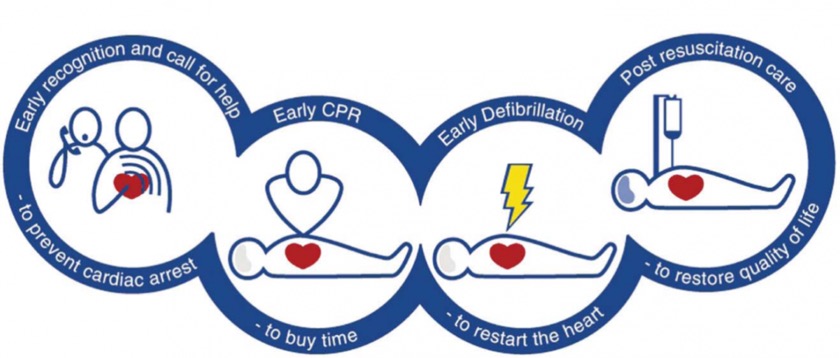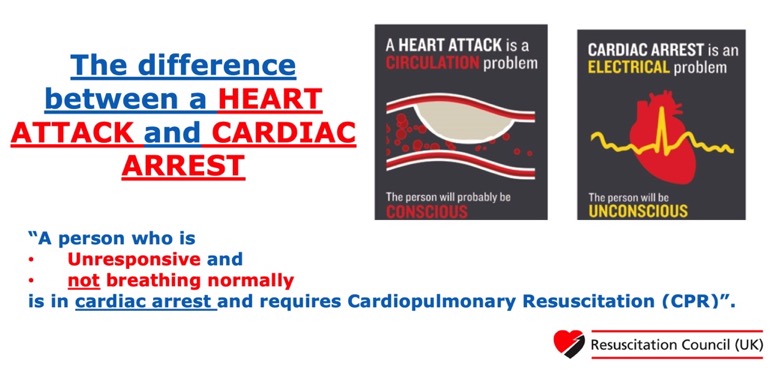THE CHAIN OF SURVIVAL

Thirty years ago, it was discovered that if a series of events took place, in a set sequence, a patient suffering from a sudden cardiac arrest stood a greater chance of survival. These events are now known as the 'Chain of Survival'.
Could you recognise the symptoms of Sudden Cardiac Arrest? They are ...
- Unresponsiveness
- Loss of consciousness
- Lack of pulse
- Cessation of breathing
Sudden Cardiac Arrest is not the same as a heart attack. However, a victim of either condition requires 'Early access to Emergency care'. Therefore an immediate 999 call is crucial, a delay of just a few minutes could prove life threatening. By quickly recognising a medical emergency, a bystander can help save a life.

CPR or Cardiopulmonary resuscitation is the second link in the Chain of Survival, it is the link that can buy life-saving time between the first link (Early Access to Emergency Care) and the third link (Early Defibrillation). During Cardiac Arrest, the heart twitches irregularly most often due to ventricular fibrillation (VF) and cannot pump oxygenated blood efficiently to the brain, lungs, and other organs. The victim quickly stops breathing and loses consciousness.
However, prompt CPR can help sustain life during VF. The mouth to mouth breathing and chest compressions help oxygenated blood flow to the person's brain and heart, until defibrillation can attempt to restore normal heart pumping.
Although it is an important link in the Chain of Survival, CPR alone cannot fully resuscitate a person in Cardiac Arrest. Early defibrillation is the third and perhaps most significant link. Without early intervention and defibrillation the chances of long term survival decline by as much as 10% per minute
Defibrillation, the delivery of an electrical shock to the heart muscle, can restore normal heart function if it occurs within minutes of a Cardiac Arrest onset.
The fourth link in the Chain of Survival is advanced care. Paramedics and other highly trained Emergency Ambulance Medical Personnel provide this care, which can include basic life support, defibrillation, administration of cardiac drugs, and the insertion of endotracheal breathing tubes. This type of advanced care can help the heart in VF respond to defibrillation and maintain a normal rhythm after successful defibrillation. The trained Ambulance personnel monitor the patient closely on the way to the hospital, where more definitive diagnostic evaluation can occur.